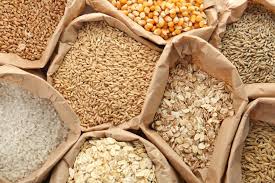Somali Magazine – The Food and Agriculture Organisation (FAO) last week published a report revealing that Africa loses $952.5 billion a year (with eastern Africa being the most sufferer, losing the highest figure of $264.9 billion) on issues directly linked to agricultural production to feed the globe.
With agriculture regarded as the backbone of the African economy, which contributes more than a third of Africa’s gross domestic product (GDP), the sector is rife with unaccounted costs associated with agrifood systems that result in high food costs.
FAO Director-General Qu Dongyu said that the world is facing a diverse range of threats in food security, climate change, biodiversity loss, worsening poverty, and economic crises, emphasising that there is not enough time to have reasonable costs of food production than now.
“The future of our agrifood systems hinges on our willingness to appreciate all food producers, big or small, to acknowledge these true costs and understand how we all contribute to them and what actions we need to take,” said Mr. Dongyu.
The FAO’s comprehensive report shows that the highest hidden cost of agrifood systems globally comes from productivity losses linked to the burden of diseases caused by unhealthy dietary patterns, resulting in a global cost totaling approximately $9.3 trillion annually on hidden costs.
Africa, for example, is losing $391 billion a year in sustaining diets and another $18 billion due to the burden of disease caused by undernourishment.
In the same way, the African continent loses $284.8 billion every year in sustaining poverty, making it the second largest hidden cost for Africa’s agrifood system.
Narrowing down to Eastern Africa, the report shows that the region has the highest hidden costs, totaling $264.9 billion, more than half of which is attributed to agrifood worker poverty.
Ethiopia and Tanzania incur the highest of these yearly hidden costs, at $51 billion and 47 billion, respectively. Kenya is incurring 26.8 billion dollars every year in unseen food production and consumption costs. However, the report reveals that the cost is a result of the burden of disease due to unhealthy dietary patterns, which costs Nairobi $11.8 billion annually.
Uganda, South Sudan, and Rwanda also lose significantly, with their hidden agrifoods costing $22.6 billion, $10 billion, and $5.3 billion, respectively.
Curiously, lower-income countries suffer more of these losses as the hidden costs represent higher percentages of their GDPs compared to more developed economies, the report shows.
The FAO will give direction on how countries can minimise these ‘hidden costs’ while making the most of agricultural production, combat food insecurity, and reduce the negative impacts of agrifood systems on global capital resources.
“The pressing need to incorporate hidden costs into our decision-making processes as part of the broader effort to transform the way our agrifood systems function is underscored by the striking figures that already emerge from this year’s findings, despite their tentative nature and the aim of refinement in 2024,” said Mr. Dongyu.

